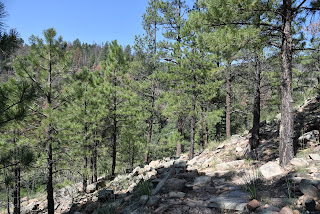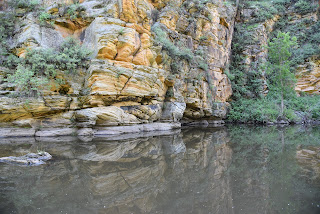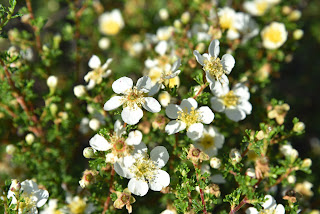INTO THE WOODS on FOREST ROAD 6033C
 |
| FR6033C on the Mogollon Rim |
Forest roads can be sweet escape routes from the swarms of summertime recreationists that migrate from the Valley to the cool Arizona high country. Especially the ragged ones; the ones few people notice or care to explore. This is a boon for intrepid types willing to walk out into the albeit signed and plowed unknown.
 |
| McCarty Ridge seen from FR6033C |
Forest Road 6033C reveals no obvious destination, its purpose is veiled in a tangle of pines.
 |
| A drought-stricken wildlife water hole on FR6033C |
The backwoods road located a couple clicks north of the community of Clints Well on the Mogollon Rim is signed but not shown on forest service maps. It runs on the terraced slopes above the course of East Clear Creek in Coconino National Forest west of the popular Blue Ridge recreation area and C.C. Cragin Reservoir.
 |
| Several side roads offer more exploratory options |
Passage 27 of the Arizona National Scenic Trail winds over Battleground Ridge through the busy hot spot on its way north to Utah. Camper convoys, boat trailers and conga line of backpackers and day hikers speak to the area’s magnetism for heat-weary outdoor enthusiasts. With so many rich hiking opportunities nearby, the logic for walking on a non-descript dirt road lands squarely between why and why not.
 |
| Kaibab pussytoes bloom May - July |
The FR6033C hike is clocked from a gate just beyond the dispersed camp sites on Forest Road 9033H. Within a half mile, the road meets its first junction where FR6033C continues left. From the junction, the deeply rutted track is an endless series of ups-and-downs that hop drainages, draws and ridges, accumulating over 1,000 feet of elevation change. For a mind-clearing, uncrowded excursion, there aren’t many distractions.
 |
| A horned lizard vogues for the camera |
A wildlife water tank and several signed side roads that appear to disintegrate a few yards in are the only disrupters in an environment dominated by Ponderosa pine trees with their signature straight-arrow trunks and rounded canopies. Forest water tanks are often dry in summer before the monsoons kick in, putting wildlife at risk. Arizona Game & Fish Department receives no general fund tax dollars to maintain 3,000 wildlife waters including created catchments around the state and relies on donations to deliver life-saving water to drought-stressed locations. (Not necessarily the water hole shown here.)
 |
| Solitude not far from popular recreation sites |
You can help by donating at azwildlifehero.com.
At the top of several rises, conifer-fleeced McCarty Ridge cuts a prominent profile on the southeast horizon. Except for wind-rustled branches and the scurrying of critters, it’s blissfully quiet. At the 2.5-mile point, in a shaded hallow, the road veers north and becomes sketchy enough to call it a turnaround point.
LENGTH: 5 miles round trip
RATING: moderate
ELEVATION: 6,894 – 7,132 feet (1,107 feet of elevation change)
GETTING THERE:
From the State Route 87/260 junction in Payson, go 40 miles north on SR87 (past Clints Well) to Forest Road 9033H on the right past milepost 292.
SEND WATER:
Arizona Game & Fish Department
Wildlife Hero Program

























































